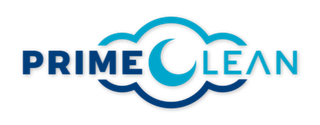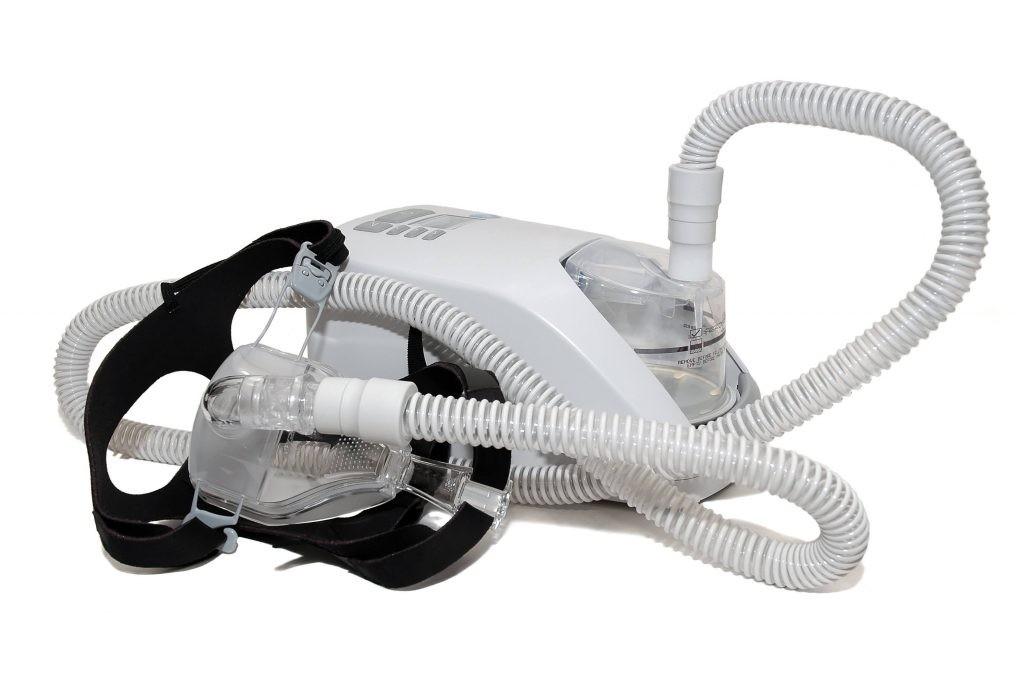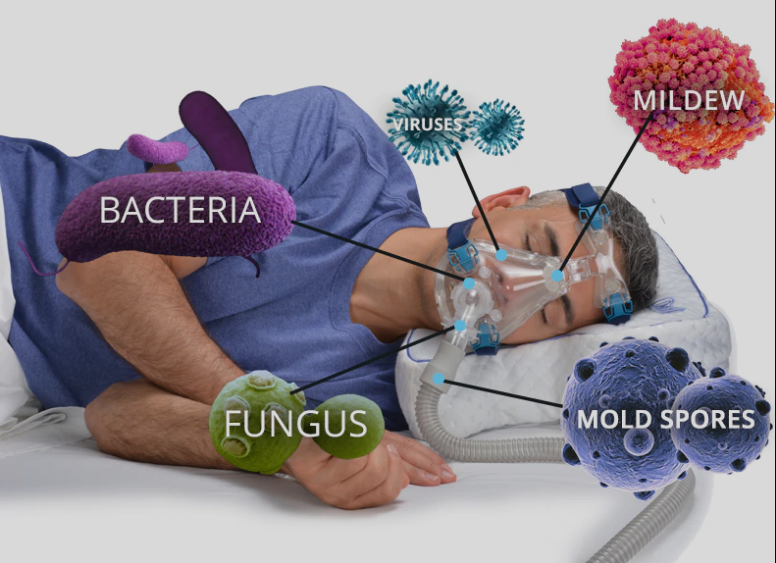CPAP Ozone Sanitizer – A to Z
Nov 18, 2021 by PrimeClean
Your CPAP device should be cleaned and sanitized on daily basis. It can be done manually with classic “washing”, or automatically with CPAP Cleaning Machine. For this purpose, we selected ozone sanitizer as the best and the most efficient solution. So let’s see what is a CPAP Ozone Sanitizer…
Sleep Apnea And CPAP Device
A CPAP device is a known name for all those living with Sleep Apnea. The National Heart, Lung and Blood Institute defines sleep apnea as a sleeping disorder in which pauses in breathing or periods of shallow breathing during sleep occur more often than normal. To avoid possible complications and more serious problems with the sleeping process, as a therapy for sleep apnea (obstructive sleep apnea that is), doctors prescribe a CPAP device (continuous positive airway pressure) to the patients. A CPAP machine is a mechanical device that sends air pressure through a mask while a person is asleep. This air pressure is greater than that of the air around, which helps keep upper airway passages open to stop apnea and snoring.
Having a CPAP device for sleep apnea therapy means that you must always keep it fully functioning, clean and sanitized. Keeping your CPAP device clean is a must!
The air you breathe in is as clean as your CPAP device
All CPAP devices come in 3 main parts: a motor (the machine itself), a tubing(hose), and a mask.
While in the “machine” part there aren’t many parts users should think about;there are one or more filters that should be replaced according to the manufacturer’s instructions and as long as the machine is working properly,that would be it (no special cleaning or sanitizing). On the other hand, tubing and mask require more maintenance…masks are usually replaced once or twice a year and usually, the hose is changed in the same period. Besides that, there is a cleaning/sanitizing routine that is (ideally) performed on a daily basis(according to Harvard Medical School Health Publishing the mask, water chamber, and tubing should be cleaned every morning).
Keep in mind that the air you breathe in through your CPAP device is clean and safe only if the device is kept clean and maintained correctly. You use your CPAP for eight hours per night. Room air goes into the machine, filter, tube,mask, and hose. Then exhaled air goes back into the mask, tube, and machine.Over time dust, allergens, germs, viruses, and other harmful pathogens can collect. Then as moisture and humidity collect, the inside of your CPAP supplies turn into the perfect breeding ground for mold and bacteria. The potential risks with unclean equipment could also be direct exposure to bacteria, viruses, and molds. This may raise the possibility of nasty colds,sinus infections, and even pneumonia. Not only does regular cleaning of your CPAP device keeps you healthy, but it also helps keep your equipment clean which helps it last longer.
CPAP Ozone Sanitizer
As previously mentioned, cleaning and sanitizing your CPAP equipment can be done manually or automatically (using a device specially made for that purpose).
Manually cleaning CPAP equipment is time-consuming, complex, and not that effective (water-vinegar solution for example sometimes can’t reach all the places, and it takes some time to dry the equipment before use).
Many CPAP users opt-in for automatic cleaners. Automatic cleaners usually use Ozone or UV as the sanitizing agent. Although both have sanitizing effect and are simple to use, ozone sanitizers seem to have better results (UV sanitizers can be less effective if UV lamps used are not strong enough, and since they are simple to produce, with cheap UV lamps, they often prove to be not enough effective).
CPAP Cleaning Machine, more precisely, in this case, CPAP Ozone Sanitizer, is a device that uses ozone (O3) also known as “activated oxygen”, to disinfect CPAP equipment which needs to be sanitized on daily basis (tubing, mask, possibly humidifier). How is ozone produced in the sanitizer? As explained by the American Sleep Association, Ozone sanitizers have a generator that breaks down oxygen (O2) and recreate it by combining another O atom making O3, or an activated oxygen molecule. When the third O atom is added, it turns the molecule into an oxidant. An oxidant causes a substance to lose electrons, which in this case can kill germs and bacteria. It does sound like a complicated process, but Ozone Sanitizer is a fairly simple device and extremely rarely breaks down.
Often asked question, or concern is about the safety of ozone use at home… In one of our previous articles we covered this subject in detail and explained why the ozone from the PrimeClean® CPAP Ozone Sanitizer is not dangerous in any terms for its users. Let’s just share one, a key piece of information, here - you can easily conclude that if ozone is sanitizing by reacting with other substances and altering their chemical composition, it is doing the same to humans as well as to germs…and you would be somewhat correct with that. BUT, in the case of CPAP sanitizers, or other sanitizing machines, the concentration of ozone in the air that we breathe in (around these machines) is just way too low, and that’s the key point here that must be mentioned. Besides, for that “clean smell” (ozone smell) that some people feel is left, PrimeClean has a solution with special PrimeClean® Upgraded Sanitizing Bag which has a perfect seal and any ozone that gets in the sanitizing bag is filtered through Ozone Filter and turned into pure oxygen (O2), which eliminates any possibility of feeling the ozone after the sanitation process is done.
The whole process of cleaning/sanitizing with ozone sanitizer lasts around 30 minutes and is fairly simple… Just need to put CPAP equipment into sanitizing bag (be sure to empty the water; some moisture is fine, but don’t add water inside the bag), close the bag, and plug the sanitizer device into the adapter on the bag (PrimeClean® CPAP Ozone Sanitizer used as an example). The sanitizer device itself is small and portable and works on its rechargeable battery power.
Make Life Simple
Living with sleep apnea i.e. CPAP therapy itself can be exhausting and CPAP equipment maintenance only adds to it. Although manual cleaning is effective, to be done properly requires a lot of time and effort. On the other side, using an automatic CPAP Cleaning Machine requires minimal effort (just to put the CPAP equipment in the sanitizing bag and plug in the sanitizer) and the process is finished in only 30 minutes.
PrimeClean® CPAP Ozone Sanitizer offers a full 1-year warranty in case the product is not functioning properly or and 30 days return if you are not satisfied with the product.





